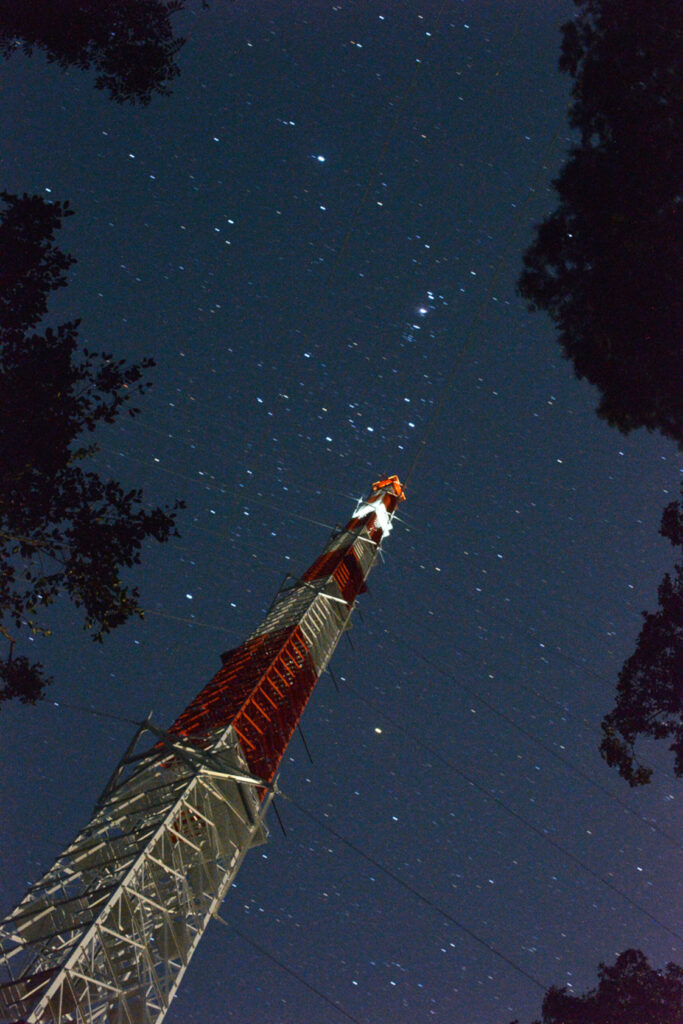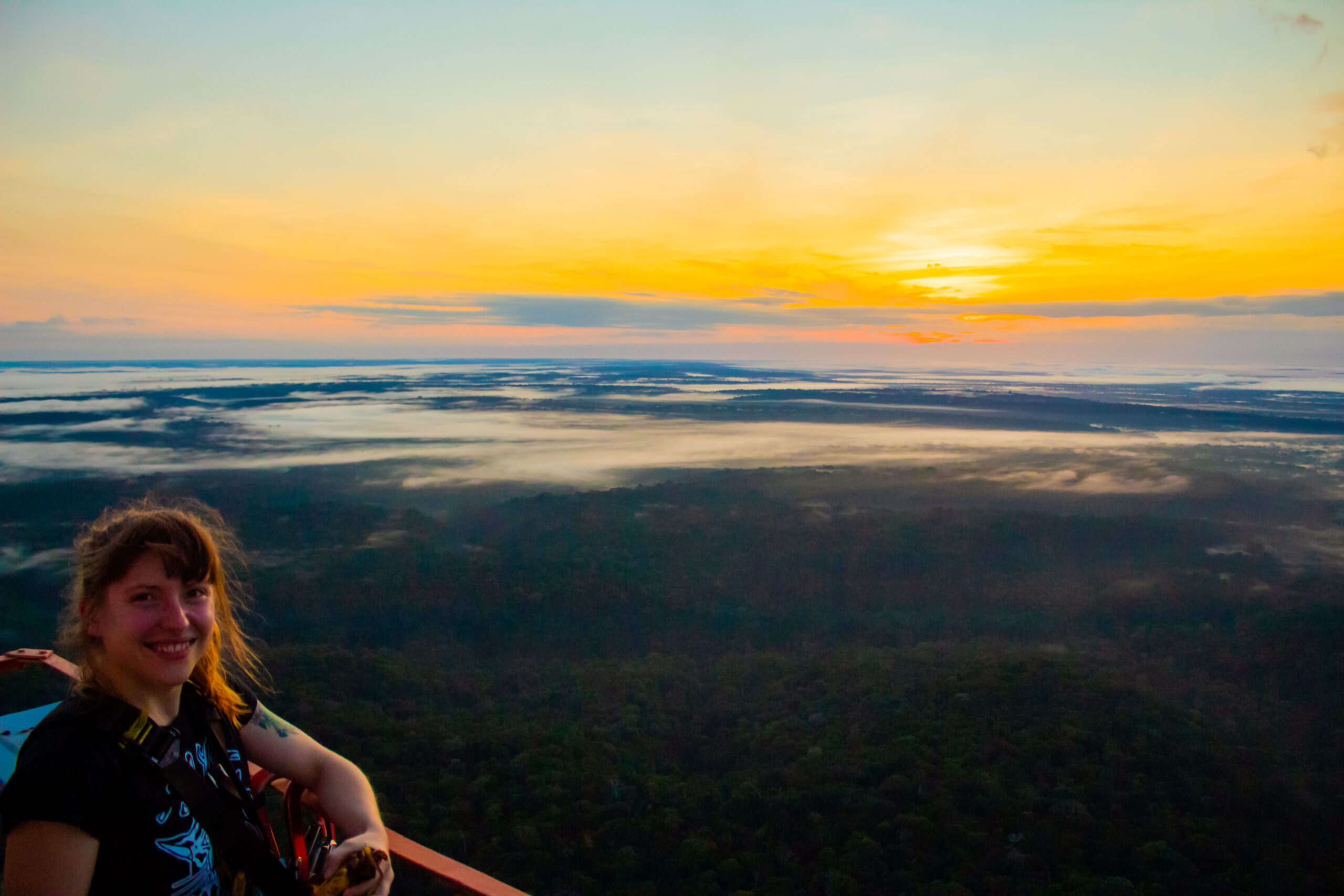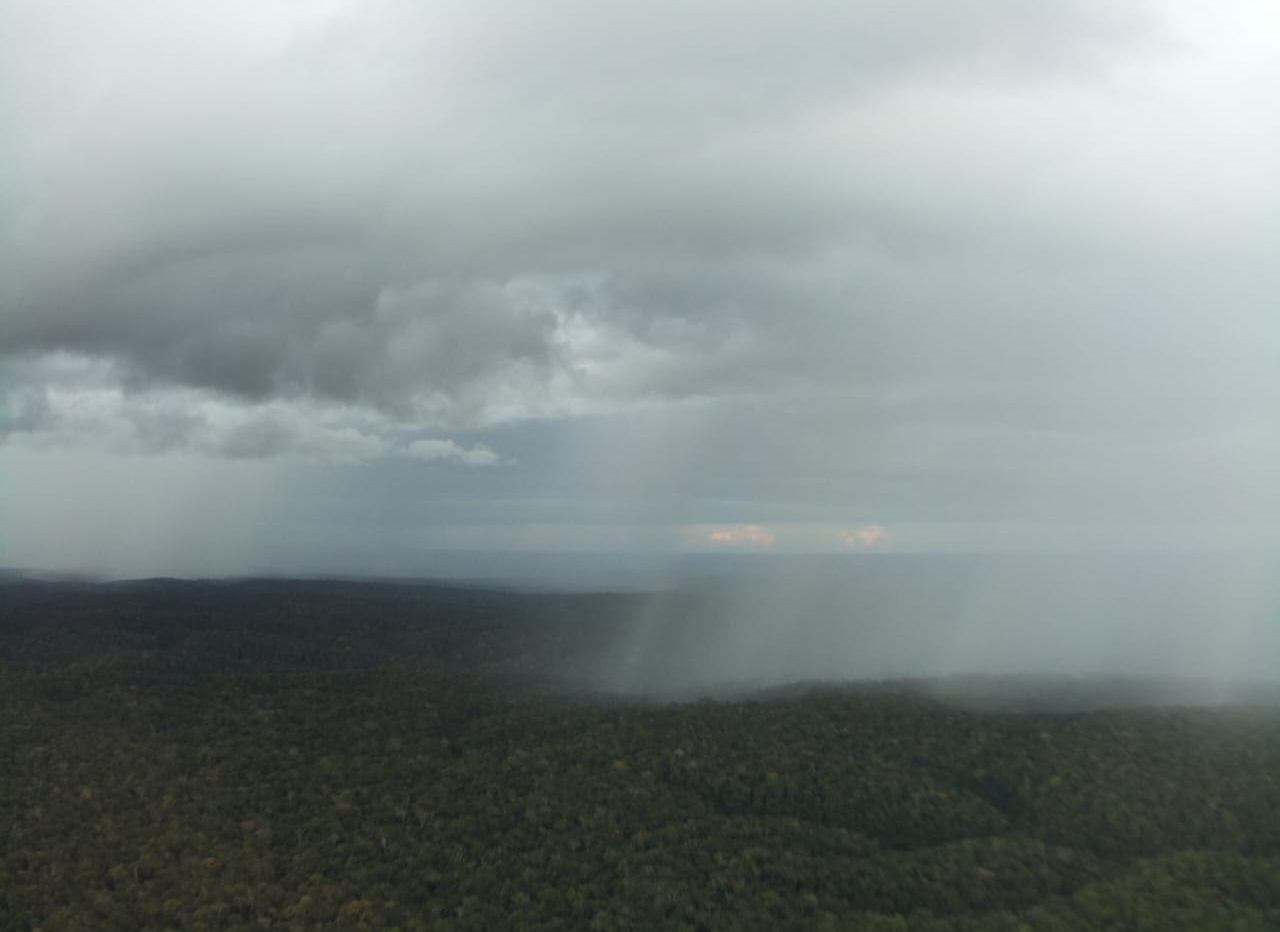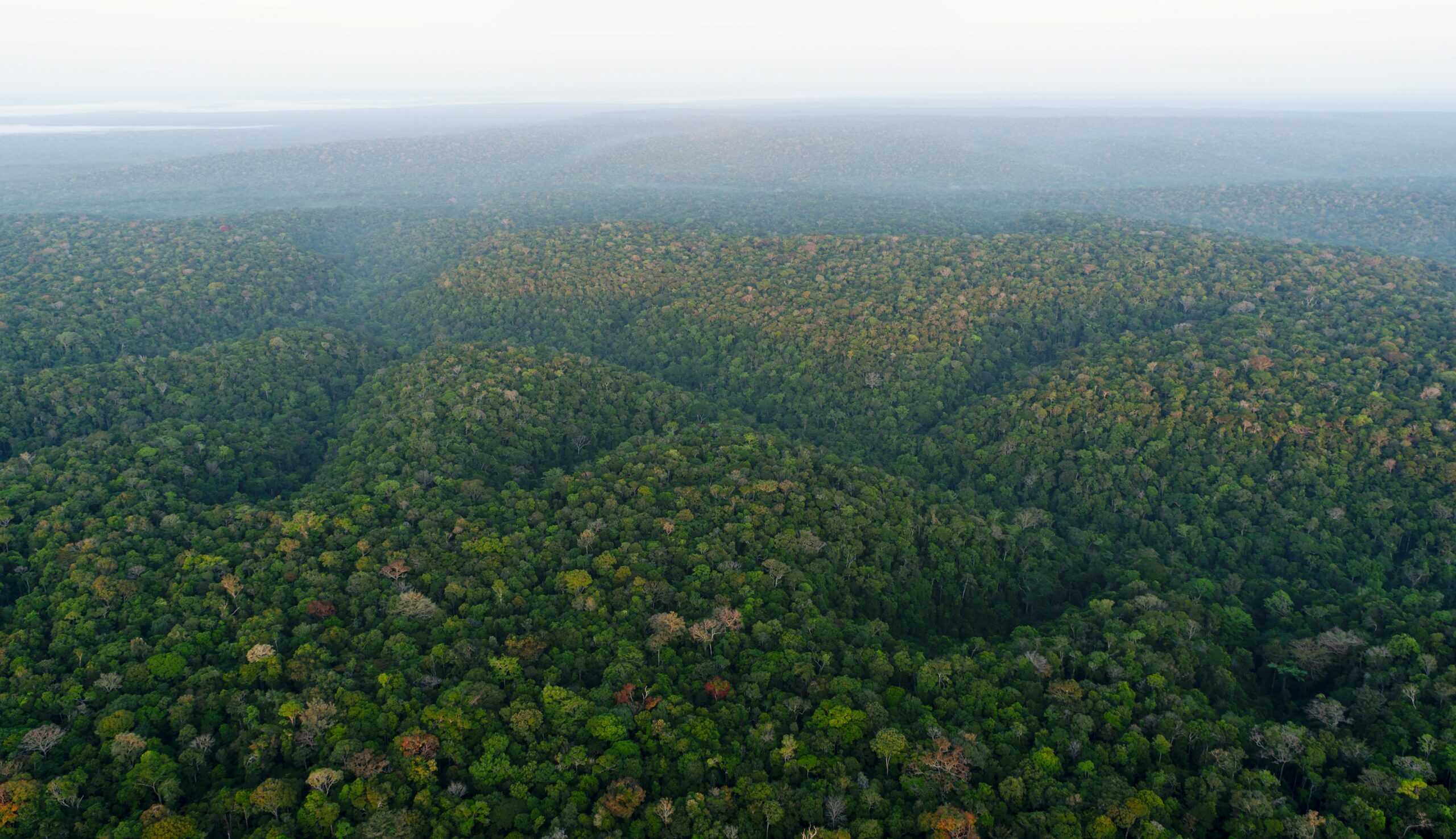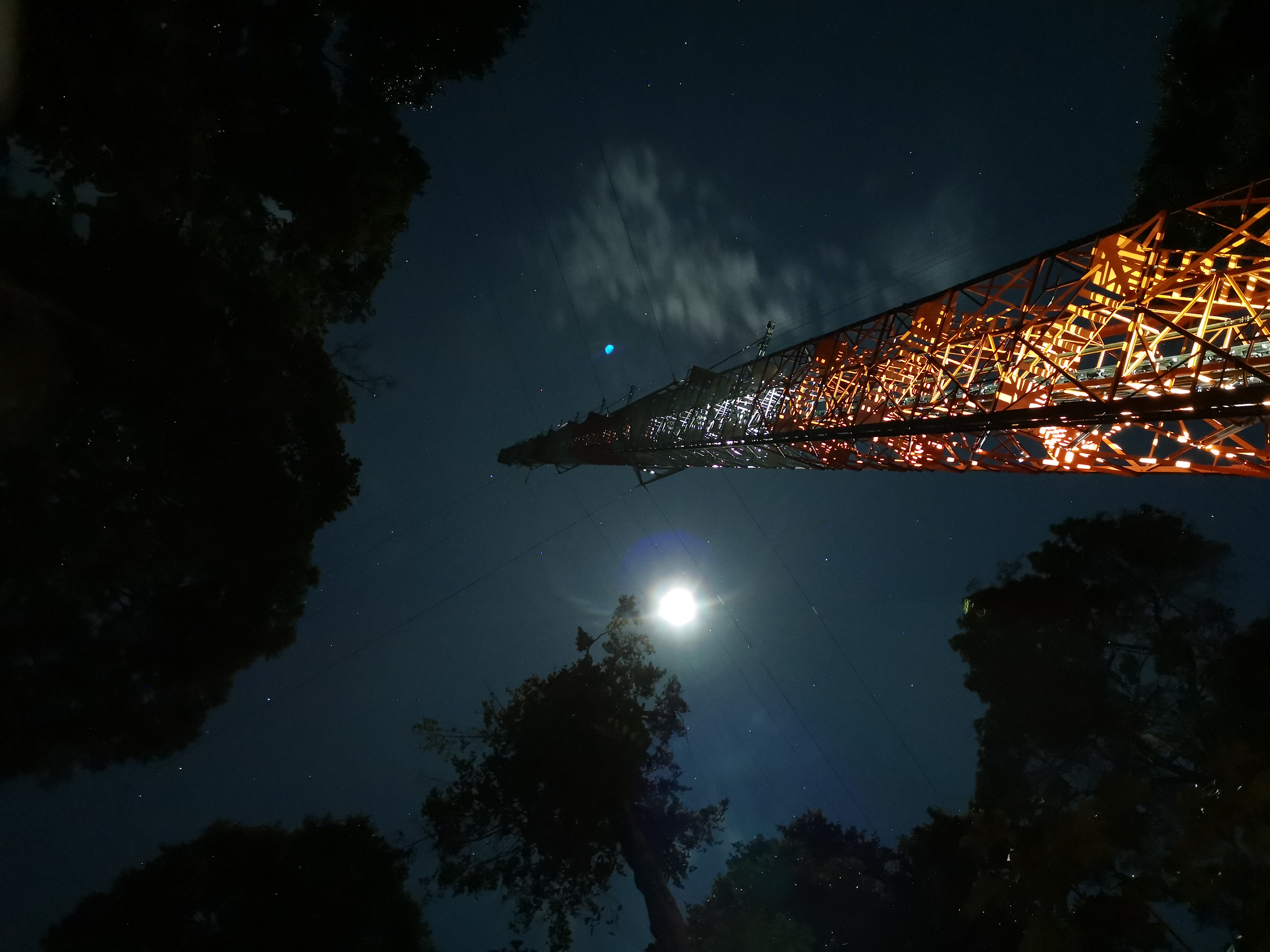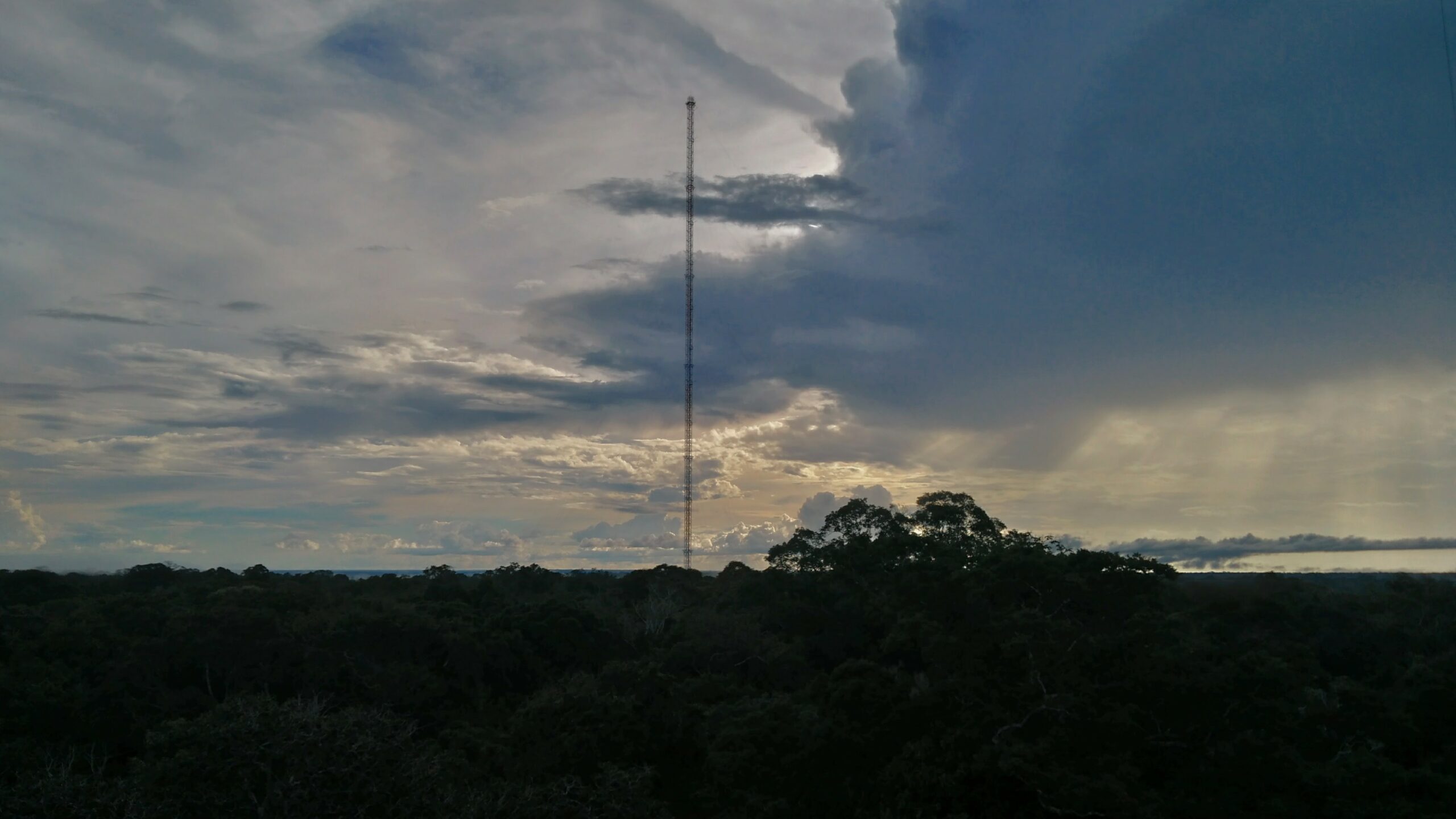Atmospheric turbulence
When you picture a clear, starry night in the tropics, you will likely think of calm air, disturbed by nothing than perhaps a light breeze. And while that may not be entirely wrong, it is only part of the story. The atmosphere is never still. There is always movement and what you perceive as a gentle breeze may in fact be a quite turbulent flow of air.
In a new study, Polari Corrêa, Cléo Quaresma, Luca Mortarini and their co-authors analyzed the atmospheric dynamics in and above the forest canopy during one particular night at ATTO as a case study. Getting a better understanding of these dynamics is important because it helps to understand how gases, particles and energy are transported and exchanged between the forest and the overlying atmosphere. For example, a highly stratified atmosphere will prohibit exchange processes, while turbulent structures on the other hand will facilitate such exchange. Therefore, understanding atmospheric dynamics also means better understanding the exchange between biosphere and atmosphere.
A night in the Amazon
The night the team studied was one in the transition from wet season to dry season in November 2015. The team collected data in a 12-hour window between 7 pm, just after sunset, and 7 am, just after sunrise.
The first part of the night until 11 pm was windy with intense atmospheric turbulence above the forest. It was generated by the rough surface of the uneven canopy. Inside the canopy, however, the trees acted to drastically reduce the wind speeds, making conditions much calmer on the ground.
Towards midnight, the wind direction oscillated for a while, while the wind speed decreased until the air became almost still at all heights. This second part of the night is characterized by a so-called gravity wave. When the atmosphere is stably stratified and the wind blows orthogonally to a hill ridge, the interaction between the flow and the orography generates vertical oscillations that propagates in the atmosphere (orographic gravity waves).
But it didn’t stay calm for long. After 1 am, the winds picked up again in a shallow layer above the canopy with low-wind speeds in the upper layers. This marks the inception of a low level jet, a fast-moving ribbon of air in the low levels of the atmosphere. It came from the southwest, the direction of the Uatumã River. Higher up in the atmosphere the winds came from other directions, at 150m from the South-East, and at 325m from the East. But throughout the night the winds all shifted to align with the lower-lost layer. The low level jet had a great impact on the scalar dispersion above and inside the forest.
The scientists hypothesize that the Uatumã River and the hilly terrain are the reason for the jet formation. The gravity waves earlier in the night might have also trigged it.
3D simulation of the topography of the area around ATTO, with the Uatuma river and the plateau on which the station sits. © Luca Mortarini
The observations of Polari Corrêa, Cléo Quaresma, Luca Mortarini and their co-authors during this one night highlight the complex dynamics and mechanisms in the atmosphere above a dense forest. They also show that we need more and longer datasets to understand these processes even better, as these dynamics affect the transport of gases and particles within and above the forest.
They published the study “A case study of a gravity wave induced by Amazon forest orography and low level jet generation” in the journal Agricultural and Forest Meteorology.
Similar articles
Luciane Reis and her colleagues now performed a new study at the ATTO site that shows that gust fronts can also cause large jumps in carbon dioxide concentrations. But what are the sources of this carbon-dioxide-rich air?
Scientists measured carbonyl compounds in the atmosphere of the Amazon rainforest with the adopted instrumentation to separate aldehydes and ketones. They made some unexpected discoveries, showing studying the variety of carbonyl compounds separately is extremely worthwhile.
Atmospheric aerosol particles are essential for the formation of clouds and precipitation, thereby influencing the Earth’s energy budget, water cycle, and climate. However, the origin of aerosol particles in pristine air over the Amazon rainforest during the wet season is poorly understood. A new study reveals that rainfall regularly induces bursts of newly formed nanoparticles in the air above the forest canopy.
So-called squall lines frequently bring thunderstorms to the Amazon region. With them comes a lot of rain, but also heavy, turbulent winds. This new study analyzes their impacts on surface meteorology and CO2 fluxes.
Direct measurements of OH radicals are rare and difficult to achieve. However, since they react with BVOCs, Ringsdorf et al. inferred them from isoprene measurements at ATTO. To do so, they applied a technique called ‘Dynamical Time Warping’ from the field of speech recognition. Akima Ringsdorf et al. published the study “Inferring the diurnal variability of OH radical concentrations over the Amazon from BVOC measurements” Open Access in Nature Scientific Reports.
In a new study, Anne Mendonça, Cléo Quaresma, Daniel Marra and their co-authors analyzed different turbulence regimes at the ZF2 site as part of the ATTO-INVENTA project. They also investigated how turbulence is connected to the occurrence of downdrafts and extreme wind gusts, that might lead to tree mortality.
In a new study, Luca Mortarini and his colleagues introduce a novel approach to the study of the roughness sublayer, using a cospectral budget model. Its originality lies in not considering the mixing layer analogy to parameterize the turbulence statistics. In addition, it relates them to the different scales of the wind velocity spectrum without making any assumption on the property of the flow.
Eiky Moraes, Cléo Dias-Júnior and their colleagues wanted to find out if the local topography at the ATTO influenced the atmospheric movements. In particular, they were interested in the effect that topography has on the formation of gravity waves. Comparing two simulations, one with and one without topography, revealed some important differences in the dynamics and chemistry of the atmosphere.
Only when the air inside of the forest canopy mixes with the air above can there be exchange. The physical movement of the air, its turbulence, determine how well these two layers of air, the one inside the forest canopy and the one above, mix. Daniela Cava, Luca Mortarini, Cleo Quaresma and their colleagues set out to address some of these questions with two new studies that they conducted at ATTO. They wanted to define the different regimes of atmospheric turbulence or stability (Part 1) and describe the spatial and temporal scales of turbulent structures (Part 2).
In a new study, Marco A. Franco and his colleagues analyzed when and under what conditions aerosols grow to a size relevant for cloud formation. Such growth events are relatively rare in the Amazon rainforest and follow and pronounced diurnal and seasonal cycles. The majority take place during the daytime, and during the wet season. But the team also discovered a few remarkable exceptions.


